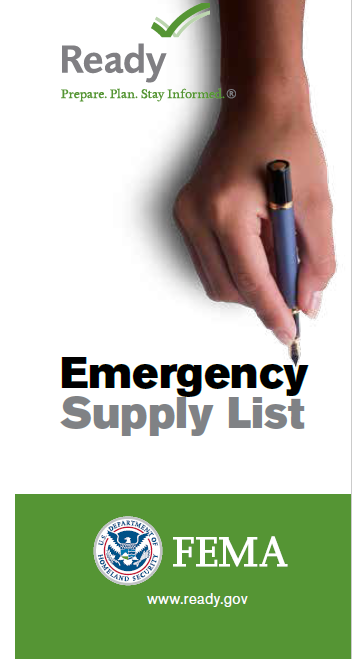
by Heidi Copeland | Aug 9, 2017
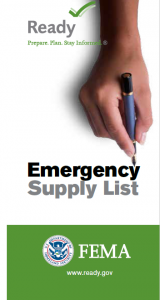 Will you be ready if disaster strikes? Disasters, or devastating events-natural or human-generated, certainly can disrupt daily life. National Preparedness Month, held annually in September and sponsored by the Federal Emergency Management Agency (FEMA), is a good reminder that we need to be ready to respond to emergencies. Adversity can strike at any time. There is no time like the present to prepare for emergencies.
Will you be ready if disaster strikes? Disasters, or devastating events-natural or human-generated, certainly can disrupt daily life. National Preparedness Month, held annually in September and sponsored by the Federal Emergency Management Agency (FEMA), is a good reminder that we need to be ready to respond to emergencies. Adversity can strike at any time. There is no time like the present to prepare for emergencies.
How? Focus on making a standing plan for family readiness! A standing plan is one that you and your family have developed in the event of disasters. For most people, the prime goal is knowing that all family members are safe and as secure as possible against harm.
Need some help? Ready.gov has information to help you with that critical “what do we do in case of an emergency” conversation with children as well as seniors or any family member with special needs. The Ready.gov website contains a wealth of information to get you started including downloadable checklists and other publications as well as printable posters. Anyone can download the materials for free!
For instance, some disasters strike without warning. Have you thought about supplies you would need the most? Ready.gov supports the use of checklists as a good way to help you make it through an immediate disaster period.
Are you a pet owner? Ready.Gov has a unique brochure containing information for pet owners and suggestions for proactive pet emergency preparedness. Have you ever considered evacuating in the car with your animals?
Additionally, inadequate insurance coverage on a family home or properties can lead to major financial losses. NOW is the time to plan, document, and insure your property as well as prepare digital copies of your important financial information. One thing to keep in mind: FLOOD INSURANCE is a pre-disaster insurance protection program. Flood damage is not usually covered by typical homeowners insurance. Check your policy. Do not make assumptions.
Be smart; take part in preparing before an emergency happens!
- Implement a standing plan
- Prepare in ADVANCE
- Stay informed
You can plan ahead for an emergency. Take action now.
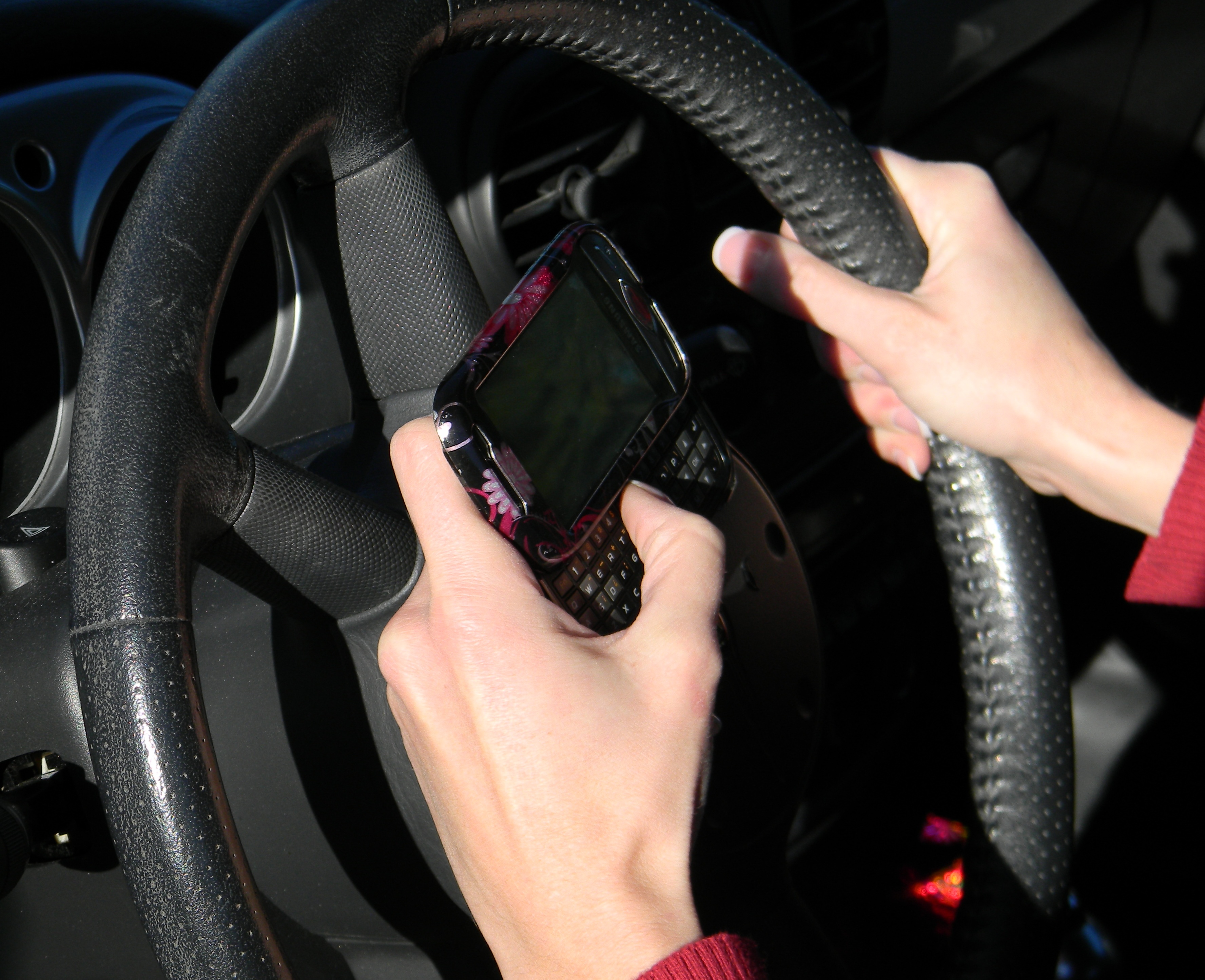
by Ginny Hinton | Jun 30, 2017
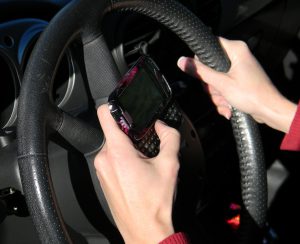 Driving to work this morning, I had to swerve to miss a driver who had crossed the center line. Thankfully, I was paying attention and he got back in his lane fairly quickly, so no one was hurt. I suspect the other driver never realized that he almost had a close encounter of the dangerous kind.
Driving to work this morning, I had to swerve to miss a driver who had crossed the center line. Thankfully, I was paying attention and he got back in his lane fairly quickly, so no one was hurt. I suspect the other driver never realized that he almost had a close encounter of the dangerous kind.
We’ve all heard the warning: driving while texting can be a deadly distraction. The problem is that most of us live fairly hectic lives. We may not intend to talk or text while we drive but the temptation to multi-task can be overwhelming – especially when we’re under a deadline. And honestly? Most of us think our driving skills are a shade above average and we can cope with a little distraction.
The hard truth is that cell phone use, especially texting, is “associated with the highest levels of driving performance degradation.” Even the most experienced texting driver takes twice as long to react, making texting a seriously dangerous activity. Around 69% of drivers, ages 18-64, report having used their phones while driving over the past 30 days. With over 9 people killed and 1,060 injured every day due to distracted driving, that’s a major problem.
So, what makes texting and driving so dangerous? You may have heard that the average texting driver takes his or her eyes off the road for an average of 5 seconds. At 55 mph, that’s like traveling the length of a football field blindfolded. What you may not know is that there are three distinct forms of driving distraction:
- Visual (requires driver to look away from the road)
- Manual (requires driver to take a hand or hands off the wheel to manipulate an object)
- Cognitive (thinking about something other than driving)3
According to the National Highway Traffic Safety Administration, texting is among the worst of driver distractions because it involves all three forms at the same time. With over 320 million cell phone subscriptions in the US today, it’s a problem that continues to grow.
Only you can make the decision to be an alert driver. Choosing to focus on your driving makes you better – and safer – while sharing the road.
Sources:
- Vegega, M., Jones, B., & Monk, C. (2013, December). Understanding the effects of distracted driving and developing strategies to reduce resulting deaths and injuries: A report to Congress (Report No. DOT HS 812 053). Washington, DC: National Highway Traffic Safety Administration.
- Cooper, J., Yager, C., Chrysler, S., (2011, August). An Investigation of the Effects of Reading and Writing Text-based Messages While Driving. Southwest Region University Transportation Center: Texas Transportation Institute.
- What Is Distracted Driving?, 2017, National Highway Traffic Safety Administration. http://nhtsa.gov/risky-driving/distracted-driving#34621.
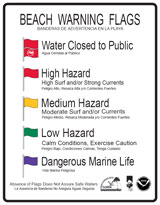
by Marie Arick | Jun 27, 2017
Summer is upon us and that means many of us will be enjoying pools, lakes, rivers, and the ocean. Florida provides many opportunities for outdoor water recreation that we should enjoy responsibly and safely. Are you prepared to handle a water emergency? Do you have water safety rules? Do you know CPR? These are all things to consider. Not everyone is ‘waterproof’ and taking precautions can really prevent a misfortune.
As the warm summer months draw many of us to the water for fun and fellowship, remember, sudden things are sudden and people drown quickly and quietly. Being honest about your swimming abilities is important. If you are not a strong swimmer, chances are you will not be able to help someone in trouble. This is also important if you are supervising others. Take the time to work on your swimming skills with others or take lessons. Knowing basic cardiopulmonary resuscitation, CPR, also can increase the chances of survival for a drowning victim.
There is safety in numbers; enlist another adult to help when supervising swimming children. If you are at a public beach, river, or lake, locate the lifeguard and position yourself close to the stand. If the beach is the locale for the day, look for the flag to alert you to the surf conditions and adhere to the recommendations of the flag and signage. If you are at a venue with no lifeguard on duty, you are now the lifeguard! Locate any emergency devices available to you and be certain you have cell phone reception in case you must call for help. Have those you are supervising demonstrate their swimming abilities. Knowledge of someone’s swimming abilities in advance can allow you to set safer boundaries. For example, if a child cannot swim the width of the pool without stopping and placing their feet on the bottom, you have determined, for their safety, they must remain in the shallow area of the pool where they can stand up. Another great option is to have the children utilize swimming vests. Never allow for rough play in the water. What seems to be harmless quickly can become life- threatening.
No matter the venue, ocean, river, lake, or pool, be steadfast in monitoring the swimmers and prepared to assist if you are needed. The American Red Cross and National Swimming Pool Foundation have an online course to educate pool owners. The American Heart Association provides the option of taking an online CPR course. Being prepared for a potential crisis is the first step to avoiding a crisis. Many wishes for a safe summer of water fun!
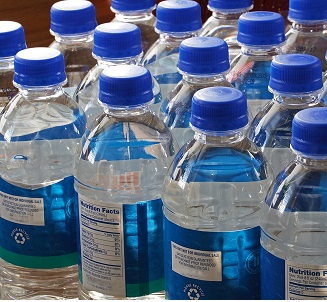
by Dorothy C. Lee | Jun 27, 2017
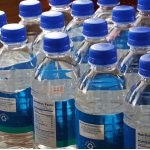
Carry water with you to sip throughout the day
Summer has arrived! During the summer months, especially along the Gulf Coast, it is hot and humid. Keeping the body hydrated is important to maintaining good health.
As the temperature rises in the summer and the body loses more water through evaporation and perspiration, it makes good sense to increase your intake of fluids. Keep in mind that by the time you notice you are thirsty, you have already depleted your water stores dramatically. A good rule of thumb is to drink a few ounces of water every fifteen to thirty minutes when you are working or playing hard in the heat.
- Myth or Fact – You should drink at least eight glasses of water a day.
Myth – On average, the body requires a half gallon of water daily. That’s the amount required to replace what has been lost through perspiration, evaporation, and body waste. Milk, juice, and other fluids can be added to your daily total. Beverages that contain caffeine, such as coffee, tea, and soft drinks, are not good substitutes for water. Caffeine actually may cause the body to lose water. The same is true for alcoholic beverages. They contribute to water loss, not gain, because alcohol acts as a diuretic.
- Myth or Fact – All water is the same.
Myth – The following guide will help you navigate the sea of choices available:
- Distilled Water – is pure water with no added chemicals or minerals.
- Mineral Water – is available in canned or bottled varieties. Many brands include a mix of minerals to improve the taste. Natural or artificial flavors, such as lime or lemon, may be added to some. Some varieties add sugar. Check the label.
- Soft Water– commercially softened water often is treated with salt and tends to be high in sodium.
- Sparkling Water– some sparkling waters contain bubbles naturally; others are created with the addition of carbon dioxide.
- Well Water – is more commonly known as tap water.
- Myth or Fact – Increasing daily water and fluid intake is difficult.
Myth – Actually, there are a variety of ways to increase water and other fluid intake. Purchase a insulated water bottle and refill it throughout the day. Add flavor to water. Infused water is becoming a popular food trend. Infuse with strawberries, lemons, limes, or other flavorful fruits and vegetables. Choose foods that contain high levels of water content – for example, watermelon, grapes, and kiwi. Start the day with a glass of water at breakfast.
- Myth or Fact – Water aids in bodily functions.
Fact – Water contributes about sixty percent of an adult’s body weight. Staying hydrated may be a major benefit to increasing energy production. Increased water consumption can aid in weight loss. Water aids in the body’s temperature regulation, acts as a lubricant, and cushions around joints. Water serves as a solvent for minerals, vitamins, amino acids, and glucose. Because water is vital to bodily functions, the body directs many of its activities toward maintaining balance.
- Myth or Fact – You can drink too much water.
Fact – Over-hydration can result in water intoxication. Water intoxication occurs when you consume more water than the kidneys can excrete. Consuming large amounts of water in a short period of time can result in intoxication. Remember, you should drink at least eight glasses of water a day – it’s a fact.
Reference: https://authoritynutrition.com/7-health-benefits-of-water/

by Laurie Osgood | May 3, 2017

Mother’s Day is Sunday, May 14, 2017, and it is a great time for us to celebrate our hard-working mothers. It is also a good time to talk to your mother about her health history. Knowing your mother’s health history may help improve your own health.
According to the Centers for Disease Control (CDC), a family health history is a record of the diseases and health conditions in your family. They advise you to collect information about your entire family, including any major medical conditions so you can provide your doctor with an accurate picture of your family’s health history and genetics.
8 IMPORTANT QUESTIONS TO ASK YOUR MOTHER:
- HOW’S YOUR HEART? According to the American Heart Association, heart disease is the number one killer of women, and the genetic risk is high. Although you probably know if your mother has had a heart attack in her lifetime, you may not know if other family members have suffered from high blood pressure or heart disease.
- HAVE YOU EVER HAD CANCER? It is important to know if your mother or anyone in her family has had a cancer diagnosis, but it is also essential to know what type of cancer, when it occurred, and what type of treatment was required for their cancer. This will help your doctor determine when to suggest certain screenings.
- DO YOU HAVE ANY HISTORY OF TYPE 2 DIABETES? Type 2 diabetes is one of the diseases that can be passed down to you from your mother. If your mother has ever been diagnosed with diabetes, that information must be included in your medical history.
- WHAT WAS YOUR PREGNANCY LIKE? Pregnancy-related conditions like gestational diabetes, pre-eclampsia, and fertility issues can be inherited.
- WHAT WAS MENOPAUSE LIKE? Daughters can expect to reach menopause around the same time as their mother did. Some of the symptoms of menopause can be difficulty sleeping and hot flashes. These symptoms can be eased with foods rich in Omega 3s, such as fish oil, walnuts, seafood, and spinach.
- HAVE YOU EXPERIENCED ANY MENTAL HEALTH DIFFICULTIES? Mental health issues can be inherited as well, so this information should be included in your family history.
- HAVE YOU EVER HAD EYE PROBLEMS? Glaucoma is a disease that may typically appear in older adults. Heredity is known to play a key role in all types of glaucoma.
- DO YOU HAVE OSTEOPOROSIS SYMPTOMS? A family history of bone density problems can indicate your own chances of developing osteoporosis or other bone difficulties as you get older.
Conversations about health can be particularly difficult between parents and children, as they are not the normal topic of conversation on Mother’s Day. However, knowing your mother’s health history can help you take better care of yourself and can be an opportunity to improve the health of the next generation in your own family.
Resource: https://www.cdc.gov/features/familyhealthhistory/index.html
by Ginny Hinton | Apr 3, 2017

Simplify your life. What an easy thing to say! Unfortunately, sometimes putting those words into action can be anything but easy. For so many of us, things just seem to accumulate until clutter becomes a way of life. In fact, most Americans only use 20% of what we own. The other 80% consists of things we don’t use, think we ought to use or might use someday. This kind of clutter can take over a home, turning a peaceful retreat into a stressful out-of-control environment.
It’s a fact. Disorganization causes 80% of the clutter in most homes. Becoming more organized and ditching the clutter can do wonders for lowering stress and improving physical, mental and emotional health. Organization puts you in control of your environment, opens up more time for yourself and even saves you money by eliminating those unnecessary last-minute purchases.
Professional Organizer Peter Walsh offers the following “FAST” tips for getting rid of clutter:
F: Fix a time. Eliminating clutter isn’t something you need to do all by yourself. Make it a family affair and get even more done. Pick a weekend day or a couple of hours every day when everyone is home and get a jump start on the process.
A: Anything not used in 12 months. If you haven’t used something in the last year, you probably don’t need it. There are lots of strategies for narrowing down what can be thrown away versus what needs to be kept. One idea with clothes is to point all hangers in one direction. As you wear an item, turn the hanger in the opposite direction. By the end of the season, you’ll be able to tell exactly which clothes you need to bid a fond farewell.
S: Someone else’s stuff. This one is easy. Your house shouldn’t contain anything that doesn’t belong to you. If it doesn’t belong to you, don’t keep it in your house.
T: Trash. Make the trash can your hungry friend – and feed it. Be proud of how much you purge and keep your goal in sight: Only save the amount of stuff that makes sense for your space.
When it comes to “clutter busting”, put strategy into action and you’ll soar. Take advantage of online search engines to find even more tips and tricks. Before you know it, you’ll be amazed at what you’ve accomplished.
References:
Declutter Your Life, UF/IFAS Extension, Seminole County, Julie England. 2016
Getting Organized, West Virginia University Extension Service Families and Health Programs, Stephanie Nestor and Zona Hutson. 2010
Get Organized Now Website http://www.getorganizednow.com/
Peter Walsh http://www.oprah.com/home/Clutter-Control

 Will you be ready if disaster strikes? Disasters, or devastating events-natural or human-generated, certainly can disrupt daily life. National Preparedness Month, held annually in September and sponsored by the Federal Emergency Management Agency (FEMA), is a good reminder that we need to be ready to respond to emergencies. Adversity can strike at any time. There is no time like the present to prepare for emergencies.
Will you be ready if disaster strikes? Disasters, or devastating events-natural or human-generated, certainly can disrupt daily life. National Preparedness Month, held annually in September and sponsored by the Federal Emergency Management Agency (FEMA), is a good reminder that we need to be ready to respond to emergencies. Adversity can strike at any time. There is no time like the present to prepare for emergencies.







